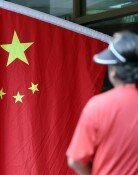NK fires an ICBM before South Korea-Japan summit
NK fires an ICBM before South Korea-Japan summit
Posted March. 17, 2023 07:45,
Updated March. 17, 2023 07:45
North Korea fired an intercontinental ballistic missile (ICBM) into the East Sea just before President Yoon Suk Yeol departed for the Korea-Japan summit on Thursday. The military considers the missile fired more likely to be a "monster ICBM (Hwasong-17 ICBM)" with multiple warhead capabilities or an improved version. North's ICBM provocation is the first in a month since the launch of the Hwasong-15 ICBM on Feb. 18.
This time, North Korea's missile testing is meant as a high-intensity threat that will not sit idly by the military cooperation between South Korea and Japan, and South Korea, the U.S., and Japan, which will be promoted further in the wake of the Korea-Japan summit. South Korean and U.S. authorities are also monitoring the possibility of additional large-scale provocations, such as the North’s seventh nuclear test.
According to the military, the ICBM, which was launched from Pyongyang’s Sunan neighborhood at around 7:10 a.m. on Thursday, flew about 1,000 kilometers northeast for more than an hour and landed in the East Sea near the border between China and Russia. It means the North pressed the missile launch button 2 hours and 40 minutes before President Yoon's departure. The Japanese Defense Ministry said that the missile landed in the waters outside Japan's exclusive economic zone (EEZ), about 200 kilometers off the western island of Oshimaoshima, Hokkaido after about a 70-minute flight at a maximum altitude of 6,000 kilometers. A South Korean military official said, “The combined results, such as detection data, indicate that the missile is similar to the Hwasong-17 ICBM. In addition, we cannot rule out the possibility that Chairman Kim Jong Un and his daughter, Kim Ju Ae, attended the missile launch.” At the time of the ICBM launch, a U.S. Cobra Ball (RC-135S) reconnaissance aircraft is reported to have recorded its flight trajectory over the East Sea in real time.
An official from the Presidential Office said, "As soon as President Yoon arrived at his accommodation in Tokyo, he was briefed and monitored the situation by video conference in a situation room equipped with a system that could connect with the B1 command post of the Joint Chiefs of Staff and the National Crisis Management Center." Right before leaving the country, President Yoon attended an emergency National Security Council (NSC) Standing Committee presided over by National Security Office Director Kim Seong-han and said, "North Korea's reckless provocations will pay a clear price, and we will further strengthen South Korea-U.S.-Japan security cooperation."
Sang-Ho Yun ysh1005@donga.com · Hyo-Ju Son hjson@donga.com





![[단독]통일교 ‘한학자 보고문건’에 ‘전재수’ 최소 7번 등장](https://dimg.donga.com/c/138/175/90/1/wps/NEWS/IMAGE/2025/12/22/133015670.1.jpg)

